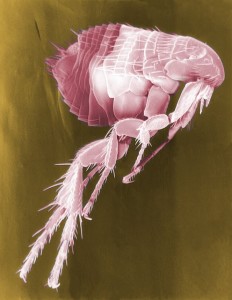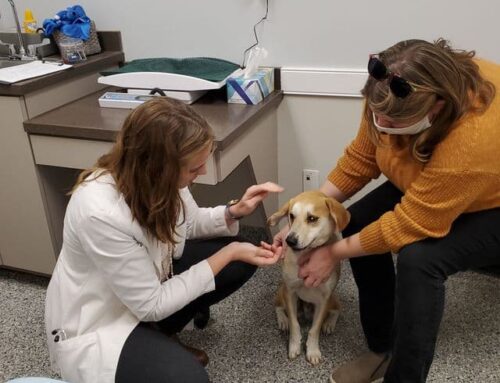 It’s true: the number one cause of dermatitis and skin problems in dogs or cats is fleas. If you’re wondering if your pet is battling fleas, take a quick look at the primary symptoms:
It’s true: the number one cause of dermatitis and skin problems in dogs or cats is fleas. If you’re wondering if your pet is battling fleas, take a quick look at the primary symptoms:
1. “Come here, Scratchy.” If you’re thinking of nicknaming your pet “Scratchy” because she’s always scratching herself, you may be dealing with fleas.
2. Search high and low. Check your pet carefully, especially at the tail or the neck since these are common places to find fleas.
3. Check the hair line. Look for red bumps or pimples where your pet’s hair is thin.
The good news is that the problem of fleas is easily preventable. Talk to your vet about these possible solutions:
1. Trifexis® protects your dog from fleas, heartworms, roundworms, hookworms and whipworms. The last three mentioned are types of intestinal parasites. Effective on your dog for 30 days, Trifexis paralyzes the flea’s mouth when it bites your treated dog.
2. Capstar® is a similar product to TrifexisR but its effectiveness lasts only for 24 hours rather than 30 days.
Move here:
3. Vectra 3D® provides broad spectrum protection against ticks, mosquitoes, lice, biting flies and fleas. An allergic pet needs the very strongest flea prevention available.
4. Environmental treatment for your house and/or yard may be recommended, depending on the individual case.
5. Symptomatic treatments like antihistamines, steroids, antibiotics or antifungals can help your pet feel more comfortable and alleviate irritations like itchiness, dermatitis or watery eyes.
You’ll notice that flea shampoo didn’t make the list of treatments because it only gets rid of fleas temporarily. That type shampoo won’t prevent another set of fleas from setting up residence on your clean pet.
Spring may bring showers, flowers and (finally) some warmth, but it doesn’t need to bring fleas. Call today and set up a time to talk about what could be bugging your pet.





